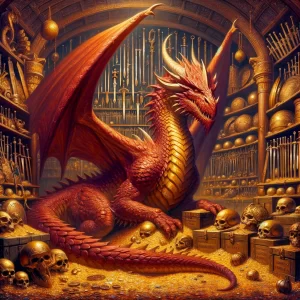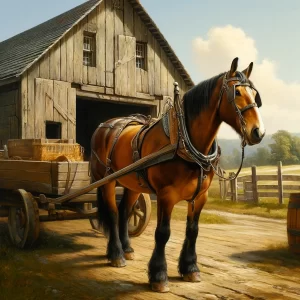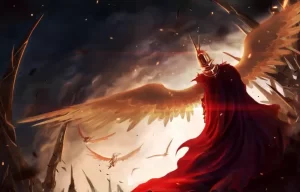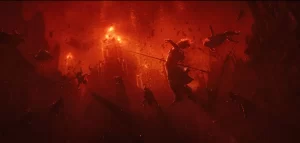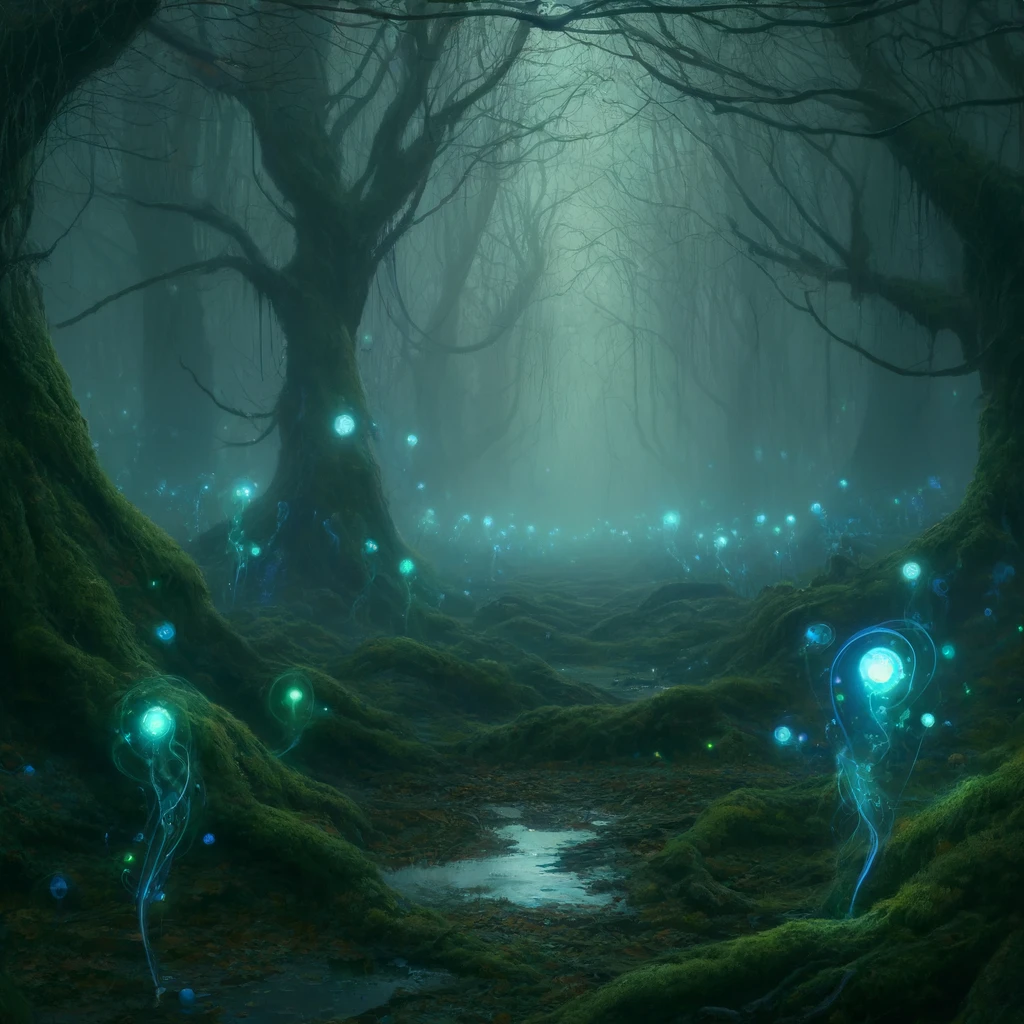
Lost in the darkness, the weary and wandering reach out, hearts open, for hope. Much to their surprise, out of the disorienting gloom bobs a faint light. The traveler smiles warmly, imagining themselves finally nearing warmth and rest. Little do they know that, as they follow that dancing guide, the only rest awaiting them will be that of the grave. Seemingly innocuous, and perhaps even inviting, will-o'-wisps present themselves as drifting points of light in the darkness, guiding lost travelers to safety. What little evidence there is suggests otherwise, for most who choose to follow those faint beacons are no more.
Will-o'-wisps appear infrequently in folklore and, where they do appear, the information about them is fairly accurate, consisting largely of the advice, "don't follow the lights". Some additional details are likely apocryphal, however, namely that the first willo'- wisp formed when 'the wickedest man that e'er there was' was found to be too evil, even for the devils of the deepest hell, and was cast back to the material with only a glowing ember to light his way in the darkness. This original 'Will of the wisp' (or 'Jack of the lantern', depending on the storyteller) lured unwary travelers to their doom among the marshlands, it is true, but is likely a fictitious character, created long after the fact.
Will-o'-wisps are formed where beings die miserably in areas suffused with magic, which interferes with the spirit passing on or becoming a ghost. Subtle variations of wisp exist, governed by the overriding emotion experienced by the dying soul, and each seeks to perpetuate that same emotion; fear, anguish, despair, or rage. Wisps feed on these emotions, growing stronger as they absorb them and, in so doing, draining the life from their prey. Particular strength and relish is gained from the dying breaths of those consumed by their chosen emotion.
Beings of pure emotion, will-o'-wisps have no vestige of their original personality left and exist only to spread their torment. Appearing as lights in the darkness, they lure unwary travelers astray, leading them towards hazards or dangerous creatures, or simply getting them so hopelessly lost that they will perish just as surely.
Will-o'-wisps linger in the magic-infused places that birthed them, areas upon which death and sadness lay thick and heavy as fog. Being generally unwilling to engage in combat with prey not physically or emotionally brought low, they make use of existing dangers to weaken their targets. Bogs and marshes are their most common habitat; confusing and repetitive terrain one could easily get lost in, and full of deep, sucking pools eager to ensnare and suffocate. Concealed cliff edges and pitfalls might also attract attendant wisps, especially those which are likely to fatally injure and cripple without killing outright, allowing an extended agony for the wisps to revel in.
Their method of luring with light requires some level of darkness in order to be effective. Some simply emerge at twilight and hunt through the night, but those who dwell in shadowed forests, caves, swamps, or areas of constant fog or mist, are able to work tirelessly throughout the day. Places of perpetual twilight therefore birth a large population of wisps, as twice the victims can be led astray and harvested.
Wisps are intelligent and can speak, though they rarely do so, and rarer still do they truly converse. For the most part, they use short, simple phrases in order to lure and pacify with quiet, child-like voices; the juxtaposition of their innocent voices and depraved actions generally considered quite disturbing. Many remain silent until their true nature is made clear, using their voices only to mock and terrify their prey. Wisps are unlikely to be reasoned with, with no real goal beyond feasting on whatever emotion drives them, though a few might be willing to allow victims to leave alive if there is good reason to believe a greater feast would come of it (for example, if said victim promised to direct unwary travelers towards the wisp's territory in future).
While they often end up pursuing the same prey, will-o'-wisps do not truly work together. Groups mob together out of convenience and coincidence. When multiple wisps attempt to lure the same traveler, they are even more likely to become isolated and lost, and so all can share in the spoils. Once a target is at their mercy, all wisps in the area will be drawn to their suffering, and they will descend upon it in a feeding frenzy, all seeking to drink in as much anguish as possible, before spreading out again to watch for the next potential victim.
In a similar vein, wisps can often be found around the lairs of more powerful monsters (especially if natural hazards are less common in the area). The wisps lead prey towards the lair and weaken the victim while the monster dispatches it and feeds. Such a symbiotic relationship benefits both parties though, if enough wisps form in the area, they may end up overwhelming and devouring their erstwhile ally in a feeding frenzy.

